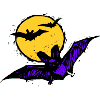Wildlife Disease and Zoonotics
Document Type
Article
Date of this Version
2012
Citation
Journal of Veterinary Diagnostic Investigation 24(4), pp. 671– 678. DOI: 10.1177/1040638712445769
Abstract
In February and March 2009, approximately 1,500 backyard pigs of variable age became sick, and approximately 700 of them died or were euthanized in the Lower Artibonite Valley and the Lower Plateau of the Republic of Haiti. The main clinical sign was posterior ataxia followed by paresis and/or paralysis on the second or third day of illness. No gross lesions were observed at postmortem examinations. The morbidity and mortality were approximately 60% and 40%, respectively. Diagnostic samples (whole blood, brain, tonsil, lymph nodes, spleen, and lung) were negative for Classical swine fever virus and African swine fever virus. Porcine teschovirus type 1 was detected by reverse transcription polymerase chain reactions in brain samples. Results of virus isolation, electron microscopy of virus particles, histopathological analysis on brain tissues, nucleic acid sequencing, and phylogenetic analysis of the viral isolate supported the diagnosis of teschovirus encephalomyelitis. The outbreak of the disease in Haiti is the first appearance of the severe form of teschovirus encephalomyelitis in the Americas. This disease poses a potential threat to the swine industries in other Caribbean countries, as well as to Central and North American countries.


Comments
U. S. government work.